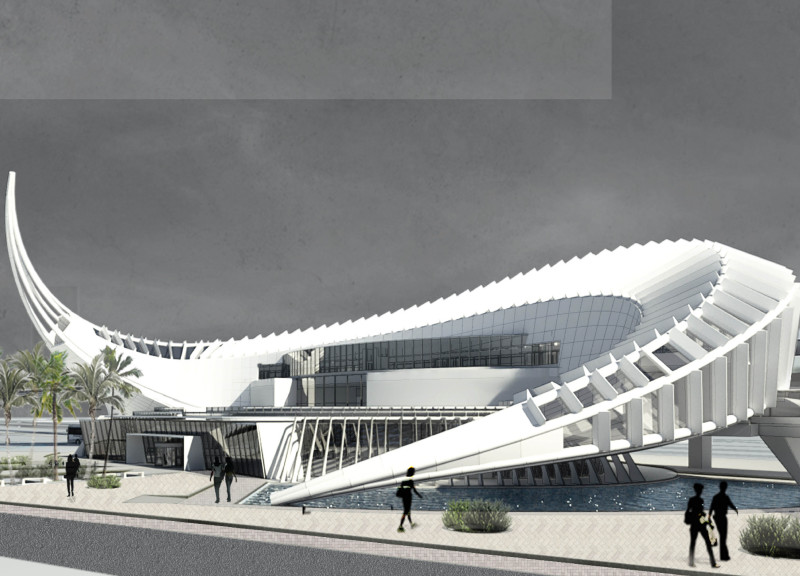5 key facts about this project
At its core, the project serves as a multi-functional space, accommodating diverse activities including retail, community gatherings, and workspace. The architectural layout emphasizes fluidity and accessibility, allowing for smooth transitions between different areas. This deliberate approach facilitates interaction among users, fostering a sense of community and encouraging social engagement.
The facade of the building is particularly noteworthy, featuring a blend of natural materials and modern finishes. The extensive use of glass throughout the facade not only illuminates the interior spaces but also ties the structure to its surroundings, creating a sense of openness. The transparency of glass serves to invite daylight into the interior, enhancing the user experience. Complementing the glass elements are natural stone accents, which add warmth and textural contrast, grounding the design in its local context.
Unique design approaches have been employed in the project’s overall form, which juxtaposes geometric simplicity with organic contours. This combination allows the structure to emerge organically from its site, minimizing disruption to the existing landscape while maximizing views and natural light. The roofline features a series of undulating planes, which echo the contours of the surrounding topography and symbolize the project’s connection to nature. This element not only contributes to its visual appeal but also plays a practical role in managing rainwater, directing it away from the building and promoting sustainability.
Attention to detail is evident throughout the design, with numerous strategically placed outdoor spaces that enhance the user experience. Balconies and terraces extend from the structure, providing residents and visitors alike with areas to relax and enjoy the environment. Landscaping elements have been integrated into these spaces, utilizing native plants that require minimal irrigation. This thoughtful selection of flora not only contributes to the aesthetic quality of the project but also reinforces sustainability goals.
The interior design continues the theme of openness and community. Expansive common areas are designed with flexibility in mind, allowing for both large gatherings and intimate meetings. The use of durable yet aesthetically pleasing materials in these spaces ensures that the project meets the demands of daily use while maintaining a high standard of design quality. Finishes such as polished concrete floors and textile wall panels contribute to an overall sense of warmth and welcome, encouraging users to engage with the space.
Additionally, innovative construction methods have been employed to minimize the project’s environmental impact. The integration of energy-efficient systems, such as solar panels and green roofs, underscores a commitment to sustainability, ensuring that the building not only serves its immediate function but also contributes positively to the broader ecological landscape.
In exploring this architectural project further, one can appreciate the subtleties within its design elements. Delving into the architectural plans, sections, and details may reveal how the flow of the building is meticulously choreographed to enhance user experience. Architectural designs should always reflect the context and functionality, and this project exemplifies how careful attention to design decisions can yield a cohesive outcome.
For those interested in understanding the nuances of this architectural endeavor, reviewing the architectural plans, sections, and design elements will provide deeper insights into the thinking that informs the project. The careful interplay between materiality, structure, and community utility makes this project a noteworthy example of modern architecture, deserving of exploration and discussion.


 Dalia F M Al Madhoun
Dalia F M Al Madhoun 




















